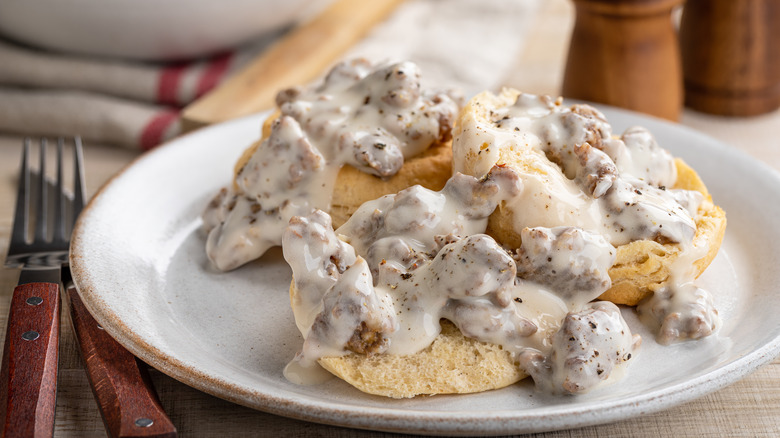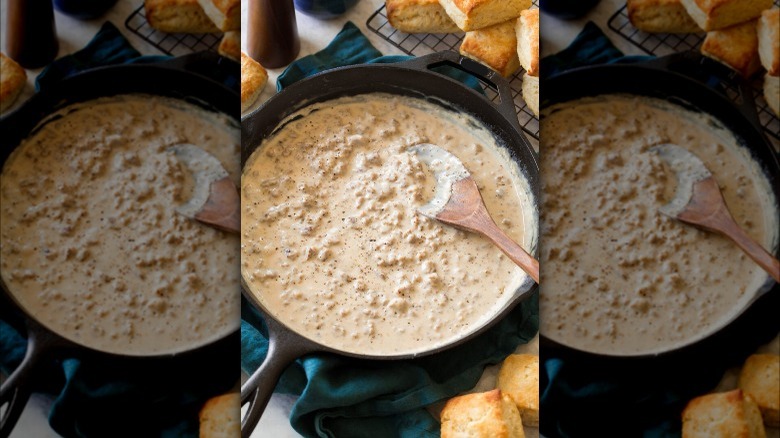Expert Tips For Cooking Restaurant-Worthy Sausage Gravy At Home
Few things are as delicious, comforting, and rich as a serving of sausage gravy. Also known as country gravy, sawmill gravy, or white gravy, this food was born out of 1800s American Southern innovation as a means to make hearty meals out of little more than fat, grain, and milk. But it remains a beloved dish to this day, served all across the country, far beyond its humble origins. Yet, it's easy to make mistakes when preparing sausage gravy at home, so we spoke with John Politte — owner and executive chef at It's Only Food, an online culinary-slash-recipe hub, and cooking instructor on YouTube – to understand the fundamentals of sausage gravy.
Of course, sausage gravy is almost synonymous with biscuits, a traditional Southern comfort food you'll find on diner menus nationwide, but Politte believes the possibilities of this sauce extend far beyond a classic biscuits and gravy recipe, saying it's "a good addition to noodles, rice, toast, dumplings, mashed potatoes, hashbrowns, eggs, chicken fried steak, and french fries." But to elevate this simple dish to its highest potential, you need to focus on a few things: the ratio of sausage, fat, flour, and milk, as well as the texture and consistency of the gravy itself. Sausage gravy is very simple in its ingredient list, so you don't need more than breakfast sausage, flour, butter, and milk — as well as a little bit of technique — to make it, according to Politte.
How to nail sausage gravy
In true American Southern tradition, John Politte doesn't cook with a recipe, but from the heart. To start, brown all of the sausage meat at once — this will vary based on how many you're cooking for, Politte says, adding, "I make this a lot for Christmas morning, and other holidays, and I haven't followed a recipe in years. Of course, when I make it at work in my kitchen, it all depends on how many guests I am preparing for on that day."
No matter how much you're cooking, browning all of the sausage along with a few pats of butter as the fat renders creates the perfect base for a roux. After his roux is ready, Politte says, "Then I add the milk or cream a bit at a time until it is the consistency I want." Some will — of course — prefer a thicker sauce, others thinner, so just keep your ratios in mind, advises Politte. More flour will make for a thicker, creamier gravy, and adding more milk will leave it runnier.
In terms of the sausage itself, the star ingredient of the dish, Politte says to separate it into very fine clumps, "so that the gravy is full of the sausage when it is distributed over the biscuits, and each bite has sausage in it." You can do this before it ever hits the pan and separate it by hand, or use a whisk or meat chopper to mince it as it browns.

